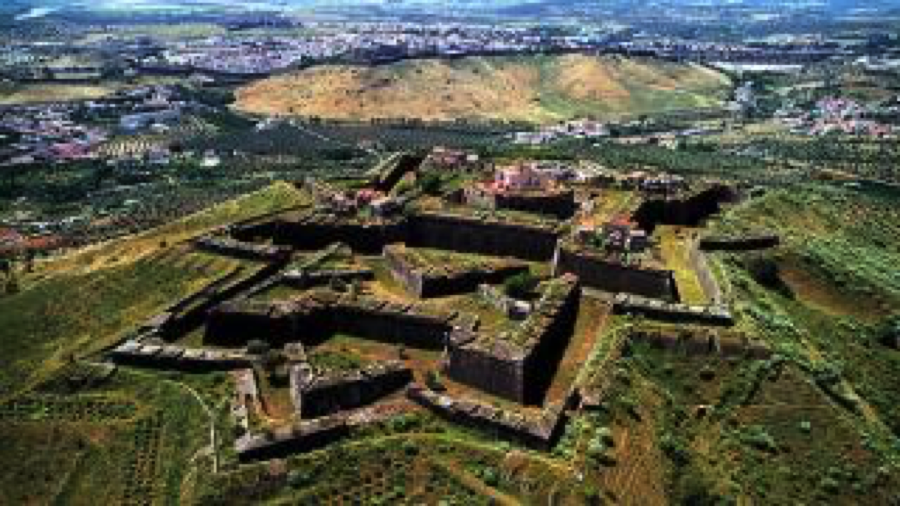New hotels, restaurants and museums – read all about what’s new and what’s next in Portugal from
Contacts: www.VisitPortugal.com, Gareth Edmondson-Jones gejmail@gmail.com, 917-399-9355.
Our monthly newsletter shares with you news of what’s new in Portugal, what’s next, what’s tasty – and amazing food and product experiences.
What’s new?
New Historic Hotel opens in Elvas under Revive Program
Vila Galé Collection Elvas is the newest 4-star historic hotel to open in Elvas, the former frontier fortress-city on the Alentejo-Spanish border, with 79 rooms, two restaurants, bar, spa and indoor pool, and many event rooms. Set in the former Convento de São Paulo in the historic center, the 1721 building, vacant since 2004, is the first hotel to open in Portugal under the Revive Program. This is a Government-sponsored initiative that seeks to rehabilitate public historic buildings and boost tourism in culturally significant locations.
New four-star hotel opens in Alqueva Lake
Across from the Great Alqueva Lake, set in the Alentejo countryside, is the new Herdade dos Delgados – Dark Sky View Hotel & SPA, featuring 24 bedrooms and 3 apartment suites. The new property set on Europe’s largest artificial lake is a prime location to stargaze by night and enjoy nautical activities by day. The hotel’s infrastructure also includes a locally sourced restaurant, terrace bar, pool and spa and sports facility.
Museum Dedicated to Filigree to open in Porto this October
The House of Filigree is set to open in downtown Porto this October to promote and honor the manufacturing of filigree, a traditional Portuguese art that uses thin gold threads to create intricate jewelry and ornaments. The new House of Filigree will have a filigree exhibition and showcase the manufacturing process, as well as a boutique selling exclusive designs.

100 maneiras photo: 100 maneiras Tasting Menu
Chef Ljubomir Stanisic opens new restaurant at Furnas Lake Forest Living Hotel in Sao Miguel, Azores
Liquen by Ljubomir Stanisic is a culinary tribute to the Azores’ beautiful green landscapes and ocean surroundings and the chef’s first haute cuisine project in the archipelago, featuring a décor inspired by these natural elements and a menu that uses local ingredients. The restaurant is part of the Furnas Lake Forest Living hotel on São Miguel, located in one of the island’s most iconic areas, Furnas – meaning hot springs in Portuguese – which had a major influence on Azorean cuisine.
Two new hotels are set to open next year in Funchal on Madeira Island
Turim Santa Maria Hotel and Caju Design Hotel are two new properties opening on Madeira in 2020. Both hotels are located in the center of Funchal, close to the local farmer’s market Mercado dos Lavradores (Farmers’ Market), several museums and the oceanfront. Turim Santa Maria Hotel is housed in a classic hotel from the 1960s that has been redone to offer 100 rooms and sophisticated touches. With 26 rooms, Caju Design Hotel is set in one of city’s top shopping streets, in the same building of the island’s first supermarket. The old façade has been kept to preserve the architecture style in downtown Funchal.
Did you know?
Off the beaten path museums in Portugal
For such a small nation, Portugal has a considerable wealth of museums showcasing diverse aspects of both history and society. From eclectic art collections, to transportation and communications, to music and sport, there is a Portuguese museum for every taste. While many are concentrated in the capital, there are several smaller and off the beaten path museums scattered across the country, where you will find interesting collections and no lines to get in.
Possibly one of the quirkiest museums in Portugal is Museu dos Fósforos (Match Museum), located in the Templar city of Tomar, holding Europe’s largest collection of matchboxes with more than 43 thousand items from 127 countries. The museum is located inside the former Convent of São Francisco, a monumental mannerist Church dating back to the 17th century.
An underrated day-trip would be to discover the art of Portuguese tapestry at the Carpet Weaving Museum in Portalegre, a hilltop city in the Alentejo region. This museum preserves the work of Guy Fino, founder of the Manufactura de Tapeçarias de Portalegre (Portalegre Carpet Manufacturing), displaying woven reproductions of modern Portuguese paintings by Almada Negreiros and other national artists, as well as colorful temporary exhibitions.
Not far from Portalegre, there is another unusual museum dedicated to soap. Museu do Sabão is located in castle town of Belver, where the production of soap had a very significant role for the local economy. The archive shows the instruments and molds used to craft, store and transport soap. There are also contemporary art pieces made from soap.
And across the river from Lisbon, in Palmela – known for its ancient fortified castle, is the Museu da Música Mecânica, shaped like a giant music box and dedicated to mechanical music instruments like phonographs or gramophones. The museum displays a private collection of more than 600 artifacts dating from the period between the late 1800s and the 1930s, paying homage to both romantic and mechanical music.
In Ponte de Lima, the oldest village in Portugal, you can find Museu do Brinquedo Português with an extensive collection of traditional toys made in Portugal that evokes feelings of childhood nostalgia. The items in this museum include dolls, figure cars, musical instruments, child-sized furniture, utensils and games that were part of children’s play from the late 19th century until the late 1980s.
Also in the North, the Shoe Museum in S. João da Madeira, is in a town where the shoe industry flourished. Here you can explore history of the shoe throughout time and learn about shoe design in Portugal in the 20th century, and meet the technology and creativity of the 21st century.
Architecture lovers will enjoy Museu Nacional Machado de Castro in Coimbra, named after the celebrated Portuguese sculptor. The museum is housed in the former Bishop’s Palace and maintains its renaissance façade, and in June it became part of the World Heritage Siteat University of Coimbra. The museum’s treasures includes artifacts from churches from around the region, such as religious paintings, ceramics, textiles and the country’s biggest sculpture collection. But its big surprise is the Roman cryptoporticus located under it – you can explore these semi-subterranean galleries whose vaulting supported the long lost forum structures above ground.
6 Portuguese pastries that are as good as a Pastel de Nata
There is more to the Portuguese patisserie than the Pastel de Nata, the tasty custard tart that became the trademark of most trips to Portugal. There are more Portuguese sweet recipes than cities and each region has its own specialty. From North to South, you can try many delicious traditional pastries influenced by the local history and ingredients. Here are just a few:
1. Pastel de Tentúgal
Born in the Convent of Tentúgal in the late 19th century by the hand of Carmelite Nuns, the Pastel de Tentúgal is a long piece of crunchy puff pastry filled with egg cream and wrapped on both ends. It first became popular around Tentúgal, then spreading to larger surrounding cities like Coimbra and Figueira da Foz, ultimately becoming one of the most beloved national pastries.
2. Pampilhos
This small cake is a regional confection from Santarém, located in the heart of the horse and bullfighting region of Portugal, Ribajtejo. The Pampilho is a long roll of dough filled with egg and cinnamon cream, created to honor the traditional cattle herders from Ribatejo, also known as Campinos, who carry long poles called pampilhos.
3. Ovos Moles
Original from Aveiro in the North of Portugal – a city that is called the Portuguese Venice due to the canals and typical moliceiro boats – the name of this delicacy literally translates to soft eggs. Ovos moles are very sweet pastries made from an egg yolk and sugar filling wrapped in thin rice paper shells, traditionally shaped with marine motifs like fish and sea shells.
4. Morgadinhos
Typical from the Algarve in the South of Portugal, Morgadinhos are sweet spheres made from almond, squash jelly and egg cream, covered in a white sugar glaze. Almonds are widely used in Southern Portuguese recipes due to the abundance of almond trees in the region. These confections can be found in most pastry shops across the Algarve and are the perfect sweet note to wrap up your beach day.
5. Broa de Mel
Madeira Island is also home to a delicious small cake that uses local molasses as its main ingredient. Broa de Mel is a small brownish molasses cake that actually contains no honey in it despite being named after it (in Portuguese, mel means honey, but on Madeira it means molasses). Some variations may contain nuts and spices such as cinnamon and cloves. Molasses is a popular ingredient in cuisine from Madeira due to the sugar cane plantations that once filled the south coast.
6. Pastel de Feijão
Last but not least, and because not all Portuguese pastries are egg based, the Pastel de Feijão is something to try. This is a unique sweet tart made from white beans and almonds with a lightly crunchy shell, created in Torres Vedras in the Lisbon district. The original brand offering these convent-made treats is Casa Brasão, which has several vending points in Lisbon and western Portugal, known for the popular surf destinations Peniche and Nazaré.




